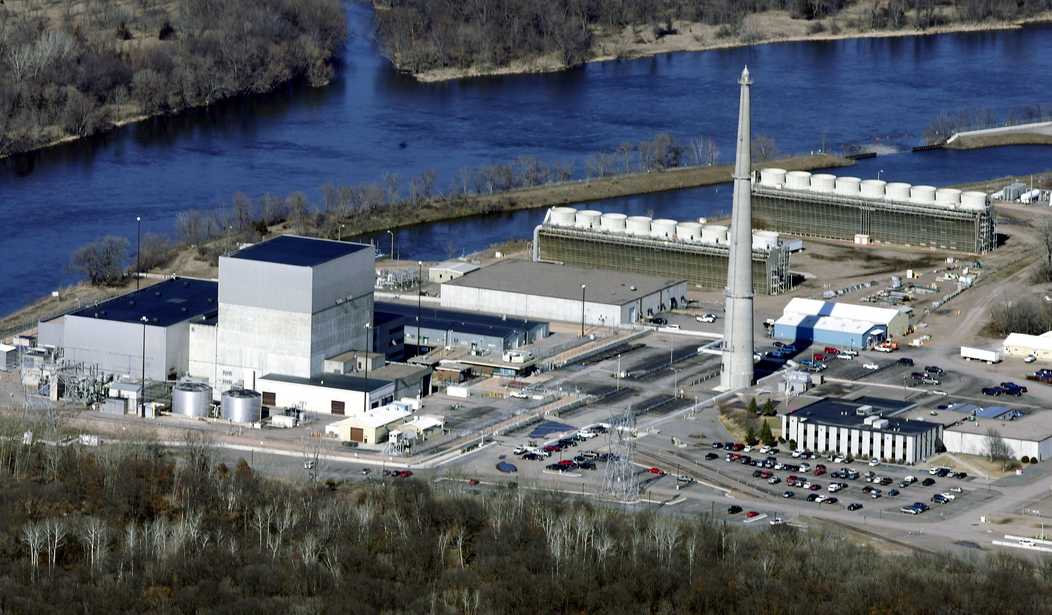It is high time for the U.S. nuclear energy industry to revive, regardless of whether the planet is marching towards a carbon-neutral energy future. In France, whose nuclear reactors that today supply about two-thirds of that nation’s energy are decades old, President Macron’s government has proposed an energy bill that calls for constructing six to 14 new nuclear reactors.
The reason? To ensure “energy sovereignty.”
Worldwide, there are about 440 nuclear reactors operating in 33 countries that together provide about 2,545 terawatt-hours of electricity in 2022, about 10 percent of the world's total. Today, another 60 nuclear facilities are being constructed in 17 countries, led by China, India, Russia, Turkiye, and Egypt. Dozens more are in the planning or proposal stages.
The only U.S. plant under construction, Vogtle Unit 4, is nearing completion.
A hostile regulatory and even statutory environment in the United States is a major reason for such little nuclear activity stateside. Far too much of the cost for large nuclear facilities is spent waiting interminably for permits, which is a disincentive to investment in the world’s most efficient, longest-lasting, and likely safest form of “clean” energy.
Vogtle Unit 3, which just went online last July, and its sister Vogtle Unit 4, which hopefully will start generating electricity this spring, were first proposed in 2004. Five years later, the Nuclear Regulatory Commission signed off on the application in 2009, but not until 2011 did the NRC approve the final safety evaluation report for the reactor design. That was 13 years ago.
Today, as in France, nearly all of the 93 operating commercial nuclear reactors (at 54 facilities in 28 states) are over 40 years old, yet they still generate nearly a fifth of the nation’s electricity. As with mining operations, the permitting jungle dissuades the development of vital national resources.
Recommended
Bad as the regulatory time frame is for large nuclear facilities, it is even worse (though technically the same) for companies desiring to bring new-design small modular reactors (SMRs) and micro SMRs to market.
The nation’s first prototype commercial SMR was invented by a team of nuclear scientists at Oregon State University in 2007. Yet when NuScale Power opted to develop a working model in 2022, they projected that their SMR would not be approved for the market until 2030. The two-step permitting process designed for large reactors remains the only pathway for these smaller reactors to win federal approval.
Well, that’s not entirely true. For over half a century, the U.S. military has relied on small nuclear reactors to power missile submarines, aircraft carriers, and icebreakers. Many of the safety controls and delays associated with commercial permitting are not applied to Naval Reactors because they occupy small spaces.
The electrical output for modern Naval Reactors is about the same as that for many of the modern-day SMR designs (less than 165 MW). Still, they are dedicated to powering turboshaft propellers rather than delivering commercial electricity. There has never been an incident of radiation poisoning associated with any of these reactors.
Reforming the permitting process for large reactors is important. Of far greater importance to the projected future of nuclear energy, though, is creating a legal and regulatory framework suitable for these smaller reactors, especially for micro SMRs, now in the development stage, that generate a maximum of 20 MW of electricity.
Micro SMRs, which have been dubbed “nuclear battery packs,” are anticipated for use at desalinization plants, mining operations, and other commercial and government operations requiring uninterrupted power. Their highest use might be at remote locations where power is typically supplied by diesel fuel or even coal that must be brought long distances to the worksite.
These modular, portable reactors can be hooked up in tandem to supply additional energy, moved from one site to another (especially valuable in military battlefields), and require little maintenance. The primary barrier to universal deployment of these small reactors is the time and cost of jumping through the tedious hoops in the nuclear reactor permitting process – many of which are entirely unnecessary for ensuring public safety.
Nuclear physicist James Walker believes that micro SMRs can provide a real solution to powering remote, high-energy-using facilities that today run on diesel fuel, often brought to the site at great expense. He sees “hundreds of thousands” of activities where a micro SMR could replace diesel generators without any need for refueling over a 20-year time frame – from military bases to mining operations and even to oil and gas and petrochemical facilities.
For this dream to become a reality in the near future, the U.S. truly needs to take a long look at the wisdom of forcing these small and microreactors to follow the procedures designed for reactors ten to 100 times their size, confined to a single location, and reliant upon cooling towers or reservoirs (as with the South Texas Nuclear Plant) that require their own permits.
While the Biden Administration has committed to helping establish a reliable domestic supply of fuels using high-assay low-enriched uranium (HALEU) – crucial to deploying advanced nuclear reactors – neither the White Houe nor Congress has taken on the job of crafting reforms to the nuclear energy regulatory process that would expedite and simplify the permitting process for small and micro modular reactors.
Up till now, though, the domestic nuclear energy industry has been complacent, apparently satisfied (or more likely frustrated) with the high costs and public outcries against their industry. What needs to happen is for the nuclear industry itself to take the lead by crafting model legislation and regulations and bring them before lawmakers and regulators for discussion.
Last month, the Justice Department published two pieces of model legislation for states to consider addressing gun violence. Model laws have been widely used by the American Legislative Exchange Council the United Nations, the European Union, and even the International Red Cross to transform common sense solutions into policy.
The era of micro SMRs and SMRs in general is just beginning. Yet, the regulatory framework available for bringing these innovative solutions to the energy crisis to market is irrational and unsuitable – it is overkill that impedes the energy transition.
Lawmakers, even regulators, are not very familiar with the realities that the manufacturers and would-be marketers of these new-generation tools cope with on a daily basis. Nor do they see any real need to take the risks to the status quo inherent in creating such a new framework. Why rock the boat?
It is thus very unlikely that Congress and federal regulators will do anything without prompting – without someone (the industry is the best candidate) offering them the solution on a silver platter.
But who will step up and make this happen?
Duggan Flanakin is a senior policy analyst for the Committee for a Constructive Tomorrow and a frequent writer on public policy issues.
























Join the conversation as a VIP Member